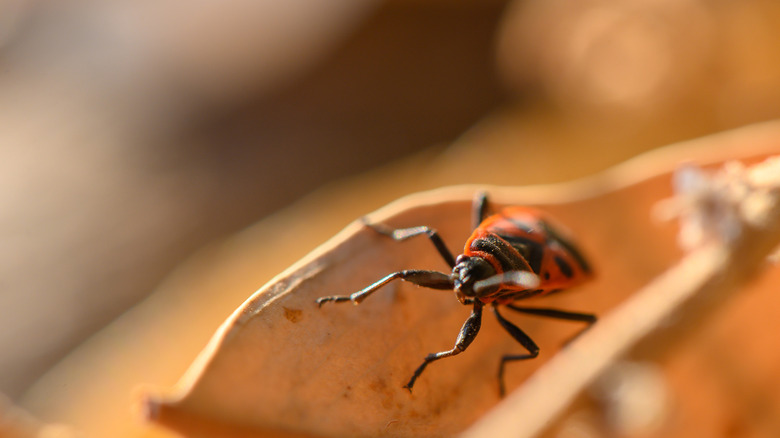The Fall Maintenance Mistake That Turns Your Garden Into A Breeding Ground For Pests
Gardening is a year-round job. You can't stop, even in fall, when most plants are dying back or going dormant. Fall maintenance is a critical part of plant care, and it could make or break your garden. Those dead, dried tomato vines and spent squash plants in your garden that you think are fine to leave in your vegetable beds could be a costly mistake. Not removing dead plants and debris is a rookie fall maintenance mistake that can turn your garden into a breeding ground for pests.
Leftover garden debris in the fall provides hiding places and food for many common garden pests. And the worst part? It allows the infestations to come back earlier and hit harder next growing season. Fall clean-up is also essential to keep another type of pest at bay: weeds. Many pesky garden weeds set seeds before dying in winter.
If you don't remove them in the fall, their seeds can overwinter in the protection of dead plant material and debris and hit you back right at the start of the next growing season. Also, fall cleaning is a maintenance task that helps protect plants from disease. That is because many diseases also overwinter in plant debris during the winter if you don't clean up in the fall.
Pests that overwinter in garden debris
Garden debris, stones, boards, weedy borders, compost heaps, and wood piles seem harmless. But if you leave them there in the fall, they can become a haven for overwintering pests. Take squash bugs, for instance. They hide out in winter as adults underneath the mulch, dead plant material, and leftover vines, waiting safely for the spring. And, once the spring comes, they will wreak havoc on your cucurbits.
Asparagus beetles are another example. They survive the cold weather by hiding in leaf litter and decomposing stalks. Similarly, cutworms and tarnished plant bugs wait out winters in plant debris. Tarnished plant bugs are especially concerning as they cause damage to over 350 different plants. But don't take cutworms lightly, either. They hit the seedlings the hardest, and you definitely want to get rid of cutworms before they destroy your lawn or new plants right at the beginning of spring.
Similarly, weeds left standing in the fall can also help provide breeding ground for many insect pests, and remember, weeds themselves are a pest as well. Also, rotting produce and dead plants in the fall can attract vertebrate pests such as rodents. These will then not only feed in your garden but also further spread any weed seeds that might be lurking in there.
How to perform fall clean-up to stop the garden pests
Start by gathering the essential tools needed to cut back and clean up your garden in the fall. These include pruning shears, loopers, pruning saws, leaf rakes, and wheelbarrows. Then, go ahead and remove any spent vegetables from your garden. If necessary, cut them at the base. And make sure you collect all the debris that shows any signs of insect damage and disease. Also, make sure to rake out fallen leaves, fruit, and other plant debris from the surface.
This will help remove the protective cover that pests really need to hide from the cold. The collected debris can then be composted, but if you dealt with a lot of weeds or pests last season, it is better just to send it all to the municipal yard waste. Home composting systems are usually not harsh enough to kill all the disease spores and weed seeds. It is also a good thing to lightly turn the soil after removing the debris.
This will expose any hiding larvae and pupae to predators and cold temperatures, helping you get rid of them even more easily. Lastly, if you can, add a layer of clean mulch to protect the bare soil, or plant a cover crop that can do this job for you.


